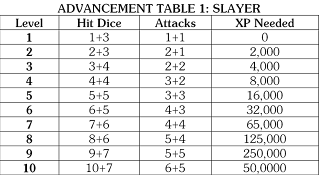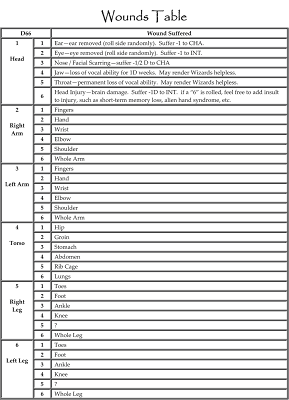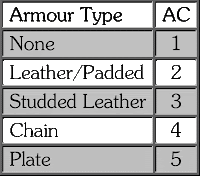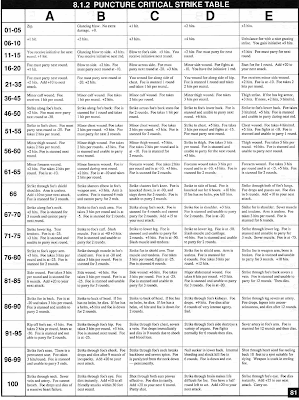Magic is a catch-all term in Athas rather than specific. Most of what is termed
magic would be termed
science or
technology by us. This includes the creation of artificial life, mutation of existing life forms, and the fashioning of advanced mechanical constructs. Most of this technology would be hardly recognizable to 21st century humans, however.
There also exists a form of personal magic which we would call psychic powers. Anyone can possess psychic powers (except for Muls). Most psychics are untrained and of limited power. They are generally referred to as wizards or witches. The term sorcerer is reserved for those psychics who have undertaken the arduous process of training and developing their powers. A key difference between the two types is that sorcerers have learned how to compensate for the tremendous energetic strains placed upon them by the exercise of their psychic abilities. Wizards, on the other hand, have not and invariably suffer for their abilities; those with greater power suffer corresponding greater stresses.
One other distinction of note. Certain sorcerers have learned how to use the energies of other people to power their magics. Although this vital energy could theoretically be offered up willingly, most often it is stolen from unwilling victims. A being's psychic energy can be captured at the moment of death by those who know how. As a result, those who practice this form of magic are often referred to by variety of negative terms: vampire, necromancer, or defiler. All of the known Sorcerer-Kings are defilers. They are capable of outstanding feats of magic by draining the life forces of hundreds of sacrifices at a time.
Possession of Magical Powers
Anyone might possess magic (except for Muls whose brains do not function that way). Intelligence or willpower are not determinate on Athas: a drooling moron is as likely to possess powers as a super-genius (although less likely to utilize the powers as well). After determining Race and Class, a player may choose to roll for sorcery (except for players of Sorcerers who possess the power by definition). This is a free choice. On 2d6, a roll of 11+ means the character has psychic power.
If a character has no psychic power, he may reroll every time he gains a level.
Untrained psychics begin with 1 Attack Mode and 1 Defense Modes, as well as 1-3 Disciplines. The specific Modes and Disciplines are rolled randomly as well.
Utilizing the magics of the mind is stressful without proper training. Untrained Wizards suffer damage to their attributes. A beginning wizard loses 1 point from a randomly determined stat (roll 1d6). Each time they gain a new Mode or Discipline, they suffer another -1.
Sorcery
Sorcery has two components: Modes and Disciplines. Disciplines are analogous to spells. Modes are specific ways in which sorcerers related to other psychic beings.
Sorcerers begin play with 4 disciplines of 1st level. Using a discipline is an INT Check and mostly functions as per the spellcasting rules of S&S. However, the Delayed Result does not mean that the Discipline is delayed in the case of psychic powers; rather it means that the psychic has a cumulative -1 penalty to further uses because of mental fatigue. Wizards always suffer a -3 penalty to using Disciplines.
Attack and Defense Modes
Psychic beings interact with each other in different ways than regular folks. Specifically, they have a psychic sense which detects active psychic use within 60’. This means that anyone using a Discipline alerts other psychics to his or her presence.
Psychics also combat each other on a different level. Although they can confront others on the physical level, more commonly they oppose each other on the psychic level. Psychic combat (also called “the Duel Arcane”) is a formalized method of psychic combat. No one is sure who formalized the terms; presumably some Ancient but who knows?
Modes are something like the stances or techniques of formalized, physical martial arts. In psychic combat, one takes an Attack Mode as the active technique and a Defense Mode to resist. Certain Modes are more or less effective against others.
There are five psychic Attack Modes and five psychic Defense Modes. Anyone with psychic power is instinctively able to use the Mental Barrier Defense Mode. Other Modes must be learned.
The Duel Arcane is like a physical battle with Attack Modes taking the place of weapons and Defense Modes taking the place of Armour. On the chart below, the number is the psychic Armour Class of each Defense Mode compared to each Attack Mode.
One very significant difference: psychic combat damages the mental attributes (INT, WIS, and CHA) directly, rather than Hit Points. Each Attack Mode specifies the attribute damaged. Psychic combat is thus brutal and to the point. Damaged attributes heal at a rate of 1 per day. Anyone reduced to 0 or less in an attribute is horribly dead--a drooling moron, a gibbering maniac, or a souless husk of flesh.
Combatants must declare their Modes blindly, i.e. before revealing them to each other.
|
| Empty Mind (INT) | Intellect Fortress (WIS) | Mental Barrier (CHA+) | Thought Shield (INT) | Tower of Iron Will (WIS) |
| Mental Thrust (INT) | 11 | 6 | 9 | 10 | 6 |
| Ego Whip (CHA) | 8 | 7 | 11 | 7 | 9 |
| Id Insinuation (WIS) | 7 | 10 | 9 | 5 | 12 |
| Psychic Crush (INT) | 10 | 7 | 9 | 10 | 5 |
| Mind Blast (WIS) | 6 | 12 | 9 | 8 | 10 |
Mind Thrust (Damages INT)
This attack mode shapes mental energy into a “psychic blade” with which to “stab” the mind of the target.
Ego Whip (Damages CHA)
An Ego Whip targets the “I” or self and, overwhelming it with negative or vicious feelings that inhibit its ability to function properly.
Id Insinuation (Damages WIS)
Id insinuation attacks a target's basest instincts, freeing them temporarily from the control of his or her higher psyche in order to induce confusion.
Psychic Crush (Damages INT)
This attack mode uses neural impulses to assault the target's mind, thereby rendering mental activity more difficult.
Mind Blast (Damages WIS)
This attack mode blasts the minds of all creatures in a 40-foot cone with mental energy.
Empty Mind
This defense mode consists of a meditative trance in which the mind of the creature using it is cleared of all surface thoughts and distractions. It is most effective against attacks which target INT. On the other hand, attacks which target WIS benefit from the lack of control being exercised.
Intellect Fortress
This defense mode summons the strength of the higher psyche to create a powerful bulwark against psychic attack. It is very effective against attacks which target the WIS and CHA, but weak against attacks which use the defender’s own INT against himself.
Mental Barrier
This defense mode draws on innocuous, repetitive thoughts to shield the mind against unwanted intrusions.
Thought Shield
This defense uses ephemeral, surface thoughts to protect the mind from attack.
Tower of Iron Will
_______________________________________________________________
I have obviously changed a lot of things here, from psionics as presented in Eldritch Wizardry or the Player's Handbook. My goals were to keep the unique flavour of psionics, while better integrating it into the S&S rules-set. Also, I must admit, to make a bit more sense of the whole damn thing. The Spellcasting rules from S&S showed me a way to eliminate Power Points and, as I posted yesterday, the Weapon vs. AC Chart showed me a way to do psychic combat. I'll probably need to fiddle with some details here, but I'm liking how this is coming out.
Oh, I should mention that the descriptive text of the Modes is pretty much all lifted from James M's draft of Psionics on Swords & Wizardry. I should rewrite that when I get a chance.






